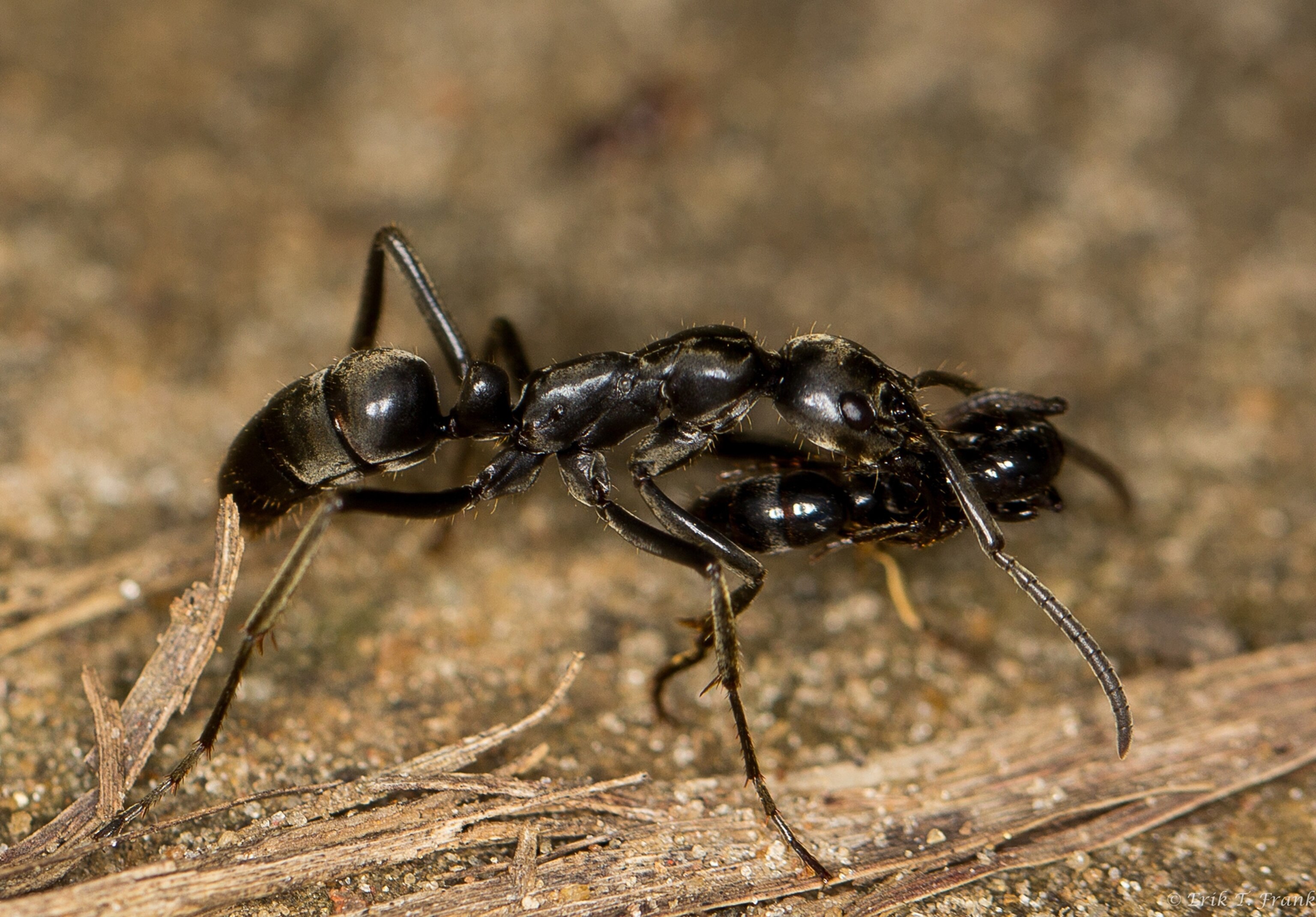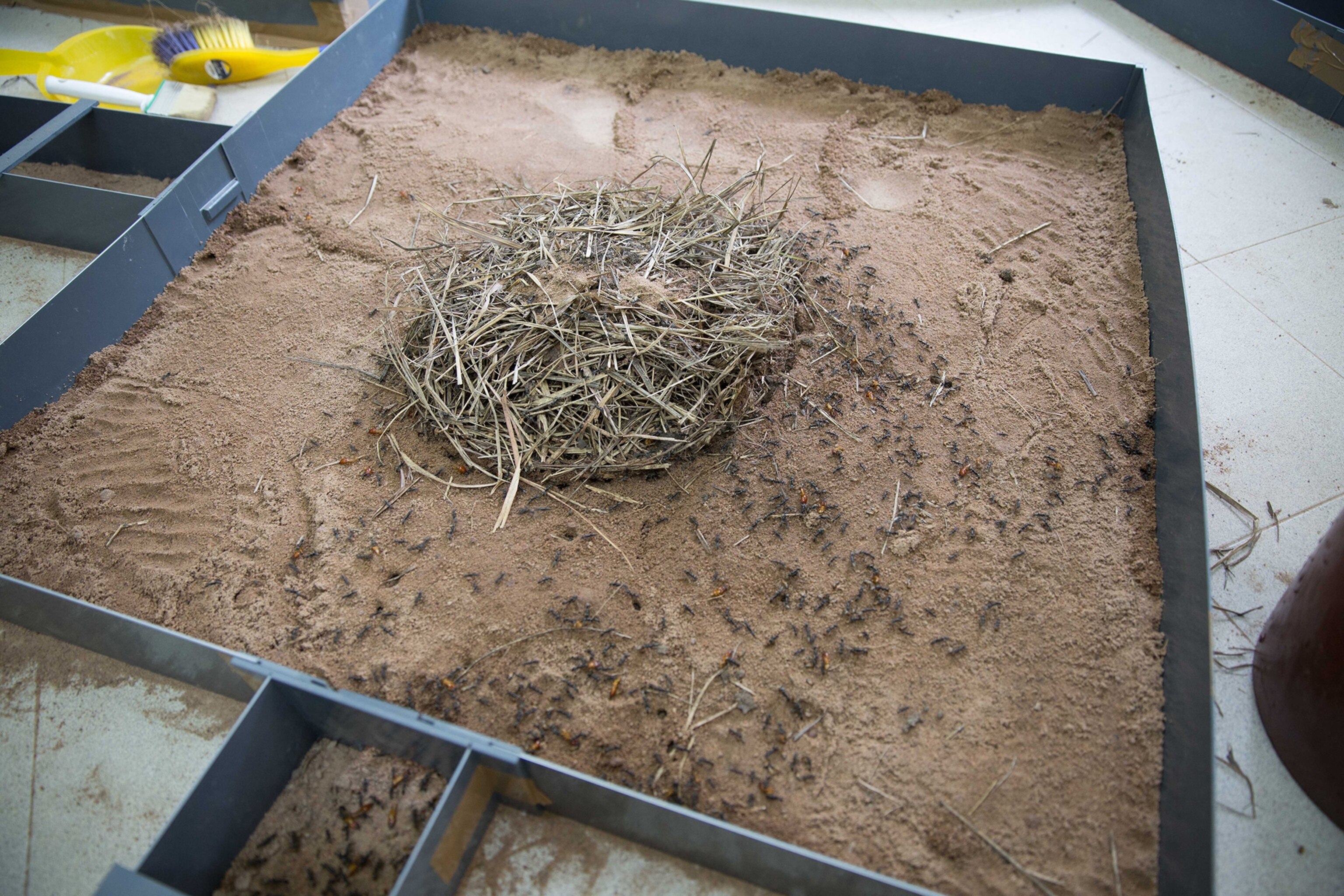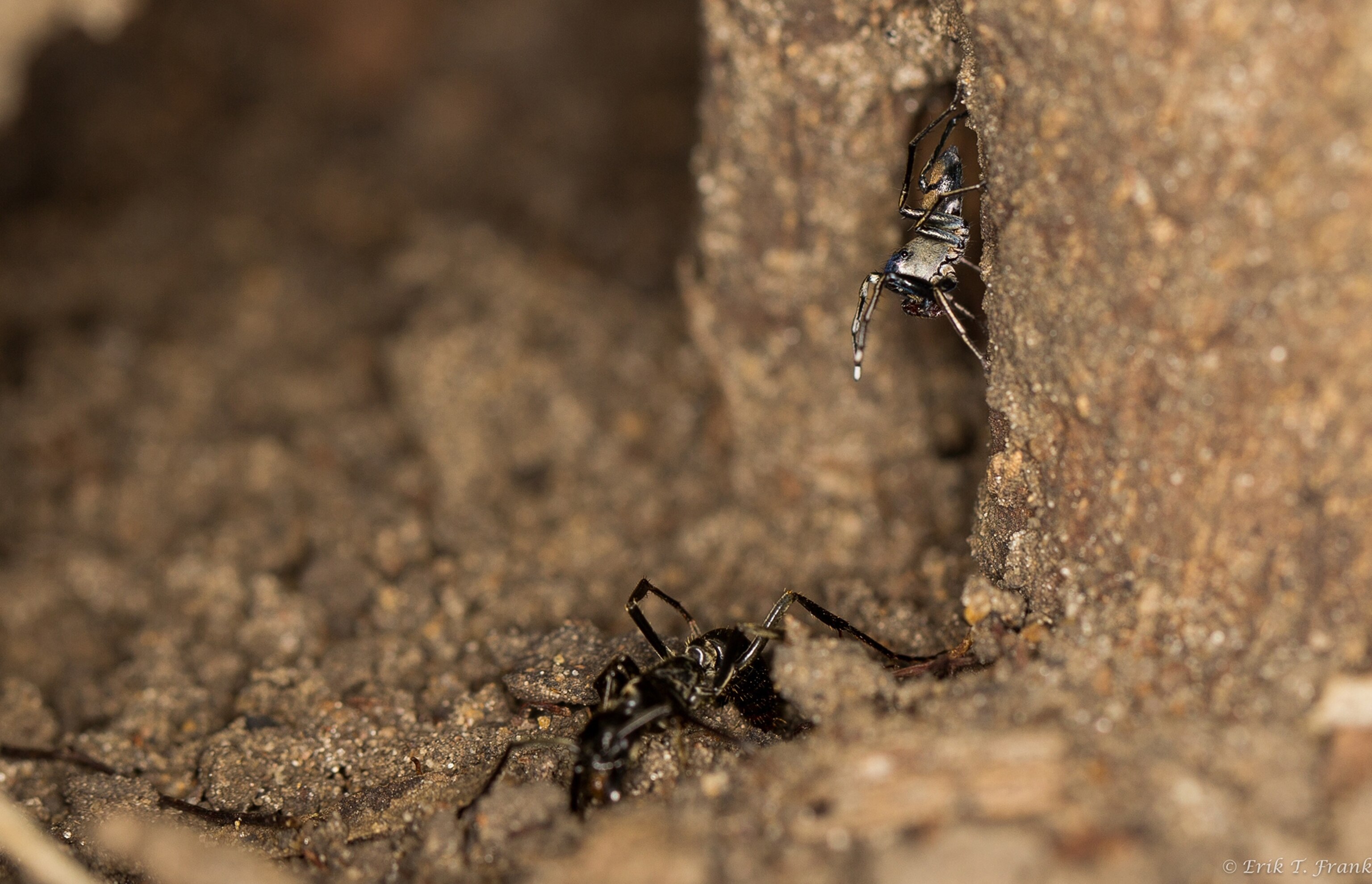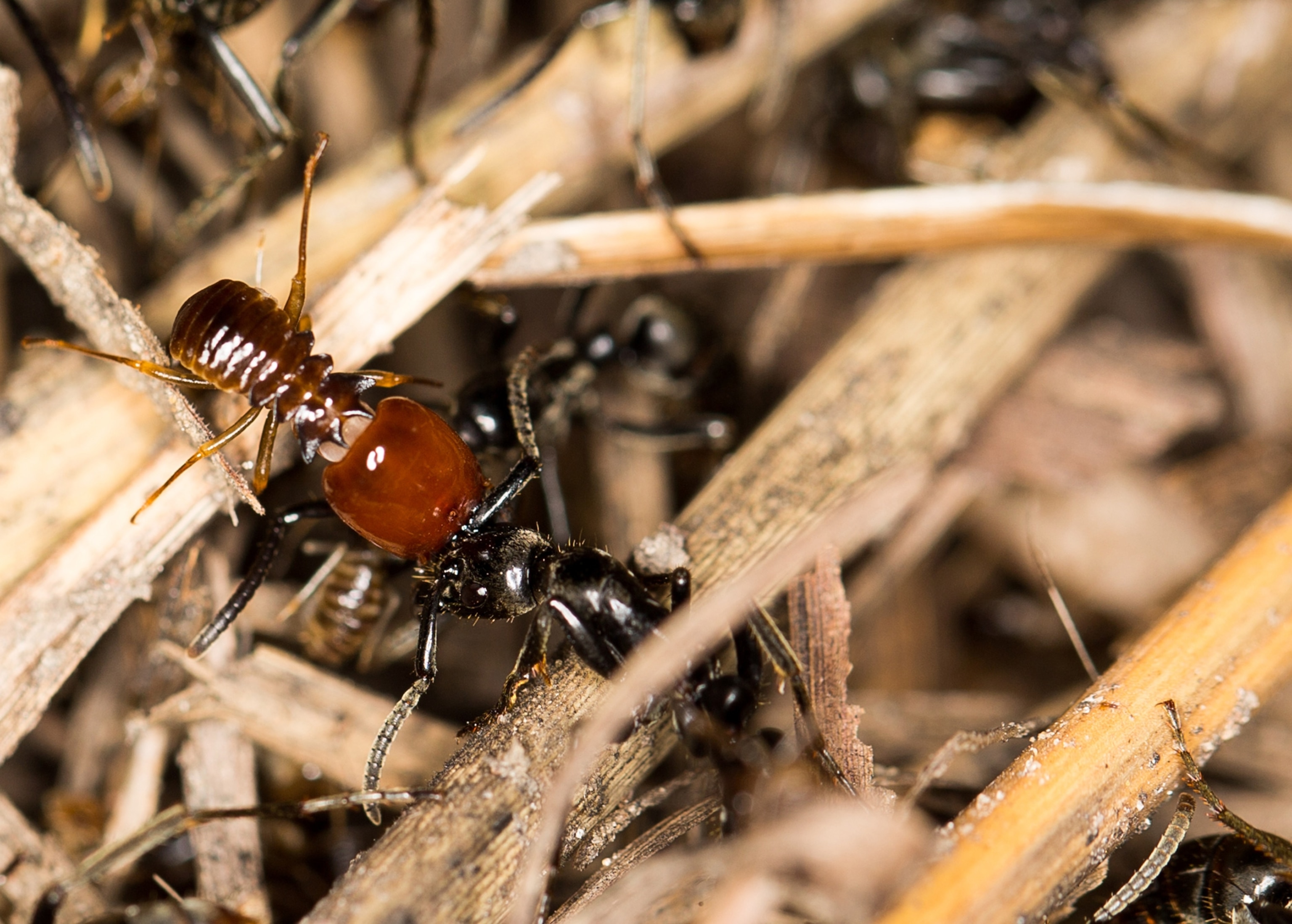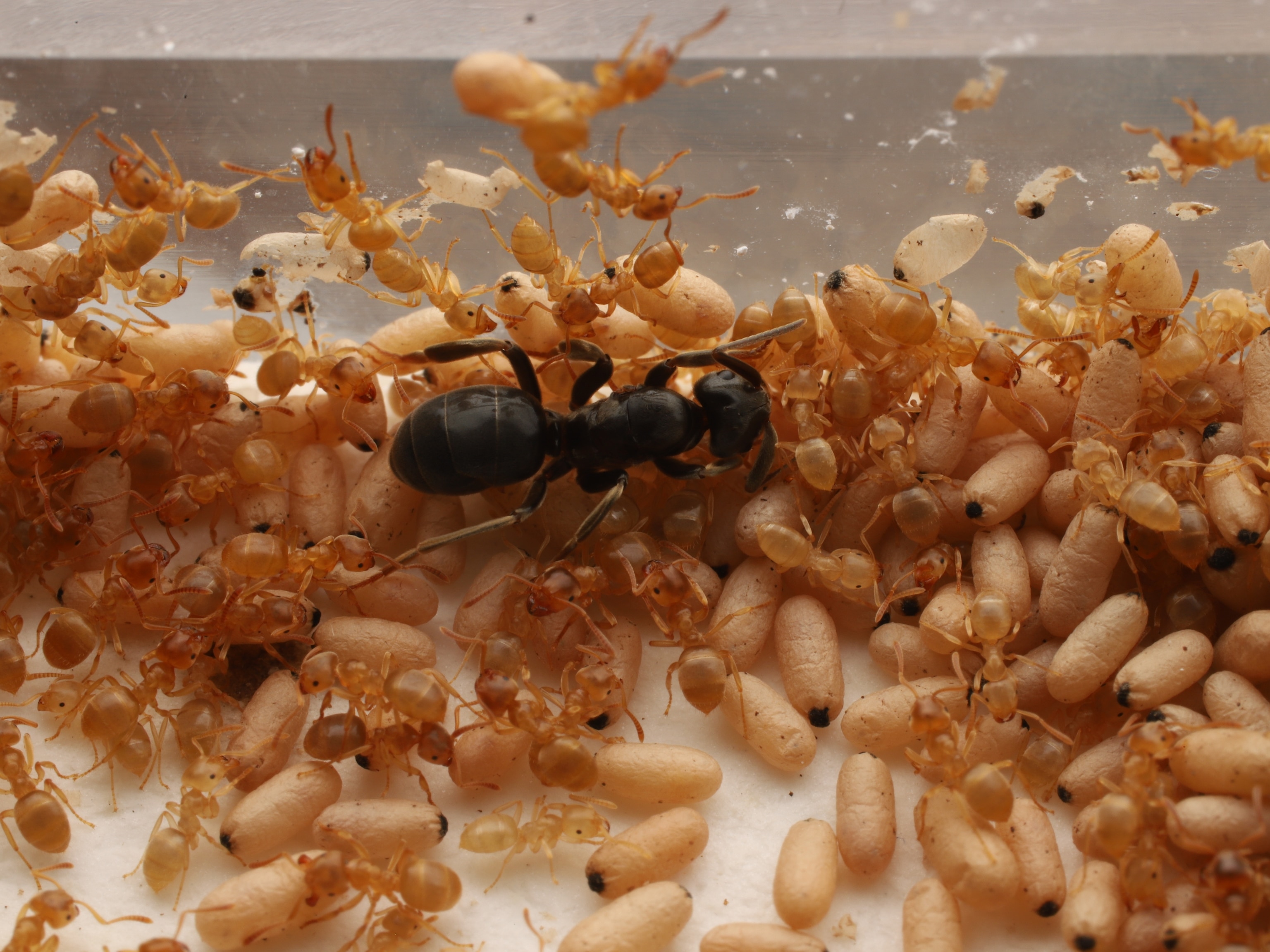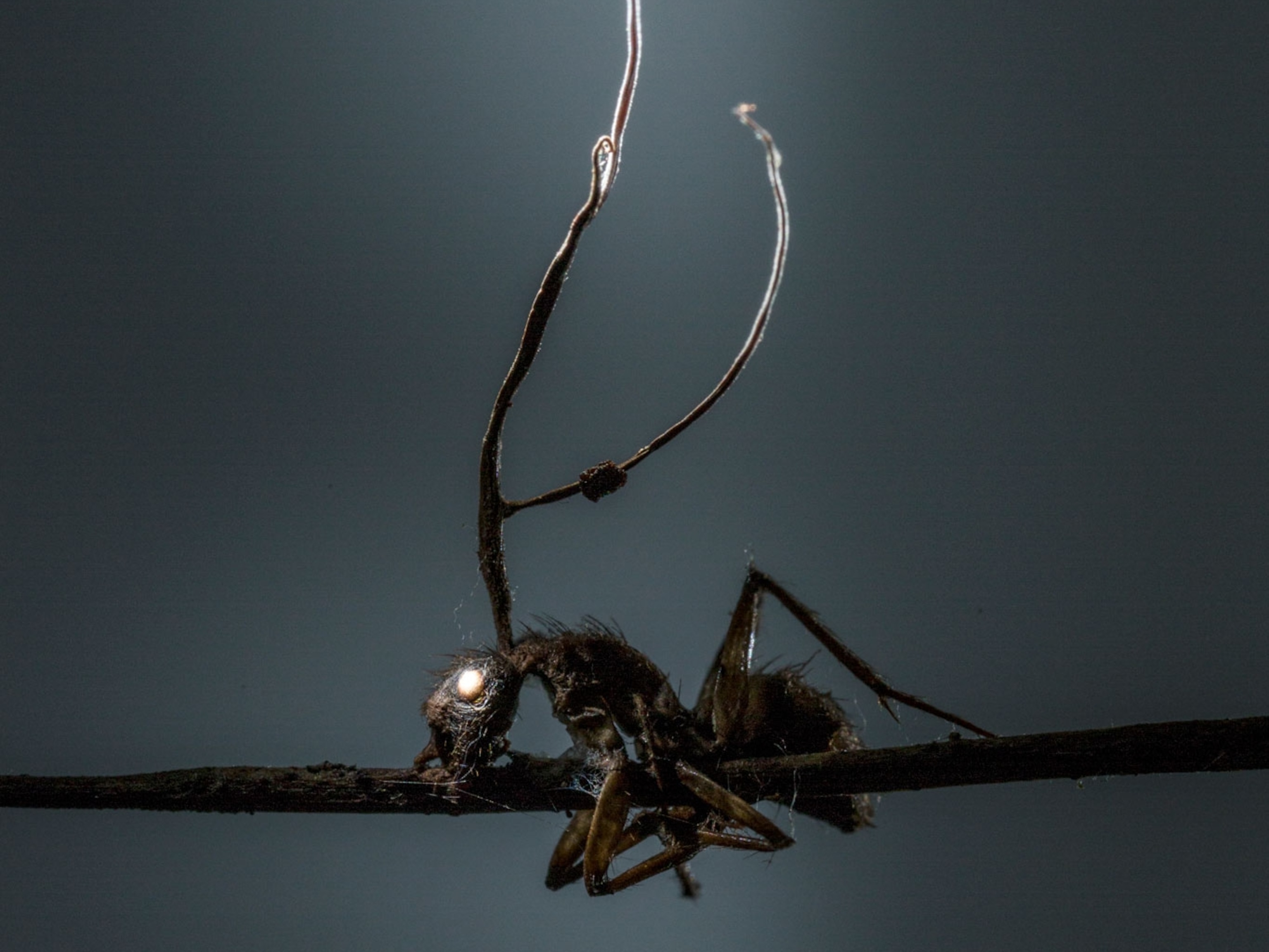Watch Ants Carry Wounded Off Battlefield—Never Before Seen
When clashing with termites, a type of African ant rescues its injured comrades, who then recover quickly, a new study says.
Like people, ants are often at war. The matabele ant, a small black species native to sub-Saharan Africa, often clashes with its favorite food—termites.
Each time hungry ants crack open a termite mound and dive down into its shadowy depths, they risk dying in battle with their potential prey. (Read how how termites build their huge structures.)
But a new study reveals the ants have a never-before-seen strategy that helps the colony weather wartime casualties. Unlike all other ants, Megaponera analis soldiers carry their injured comrades home.
While this may seem like a small courtesy to the individuals being rescued, these tiny heroics add up, says study leader Erik T. Frank, a myrmecologist at the University Würzburg in Germany.
“There is a clear benefit for the colony,” says Frank, whose study was published April 12 in the journal Science Advances. "These injured ants are able to participate again in future raids and remain a functioning member of the colony."
What’s more, Frank and colleagues estimate these ant colonies are 30 percent larger than they would be if the ants left their comrades for dead.
No Ant Left Behind
Termites defend themselves using brute force, such as tearing off limbs and antennae or decapitating their invaders. (Read more about animal warfare.)
The insects also have a second, simpler strategy: Grabbing onto the attacking ant for dear life. While this doesn’t injure the ant per se, ants with a termite glommed onto them are much slower than their unencumbered compatriots, according to their team's field observations of wild ants in the humid savannah woodlands of the Ivory Coast.
This causes termite-laden ants to fall behind, and thus more likely to fall victim to spiders waiting nearby.
On the other hand, injured or termite-ridden ants carried off the battlefield survive, and back at the nest, get their unwanted attachments removed. (Read about how ant swarms get their intelligence from sheer numbers.)
Even ants that lost multiple legs recovered in about a day. Amazingly, almost all of the rescued ants were able to participate in later termite-mound raids.
Though other ant species save their nestmates' lives in moments of immediate danger, the matabele ant behavior is unique because they don't know if the wounded ants would die without their help.
“This is a beautiful example for the evolution of a behavior without the necessity of the individual to know why it behaves the way it does.”
All For Ant, and Ant For All
While it's tempting to think the ants are showing empathy, Frank says it's not so: “The ants do not help the injured out of the goodness of their hearts.” (See "Ants Smell Cheaters and Assault Them, Study Finds.")
In fact, by separating out chemical compounds found in the ants' mandibles and then applying them to perfectly healthy ants, the researchers proved that it was pheromones that triggered the rescuing behavior—suggesting the helpers may not even realize their kin are hurt.
The study surprised Helen McCreery, a biologist who studies ant behavior at the University of Colorado at Boulder, since she wouldn’t have guessed that injured ants retained much value to the colony as a whole.
Even so, “the rescue behavior described here seems to help keep that group large and robust,” says McCreery.
“It increases the life span of those individuals, but more importantly in the context of evolution, it saves resources at the colony level.”
